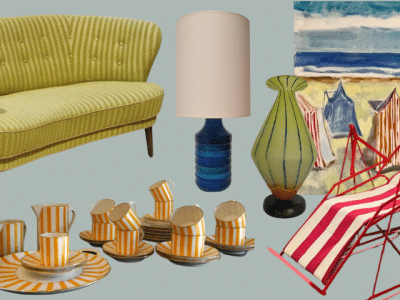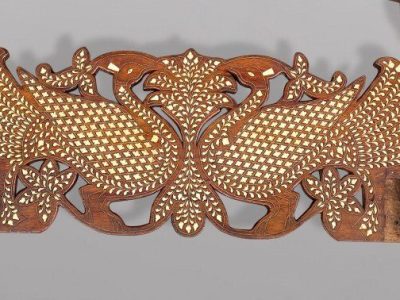For centuries, walnut wood has been one of the most beloved woods used in furniture making. The rich color, unique grain patterns, and strength make it a favorite of both furniture makers and customers. Walnut trees have been a vital part of many cultures for centuries, and the wood is still used today in a variety of applications.

North American Black Walnut Tree. © The Old Farmer’s Almanac
There are two main species of walnut: the black walnut (Juglans nigra) and the English walnut (Juglans regia). Black walnut trees are primarily found in the eastern United States and southern Canada, while English walnut trees are native to central Asia and the Mediterranean region. The black walnut tree produces a darker, more dense wood than the English walnut tree, which is more prized for the edible nuts it produces.

Raw black walnut hardwood. © Northcastle Hardwoods
Early European settlers quickly recognized the value of the black walnut tree, which had long been used by native Americans, and brought it back to Europe to use in their own woodworking. It became a popular choice for carpenters in both Europe and the United States, particularly during the 18th and 19th centuries. It was used to create high-quality furniture pieces that were both beautiful and durable.
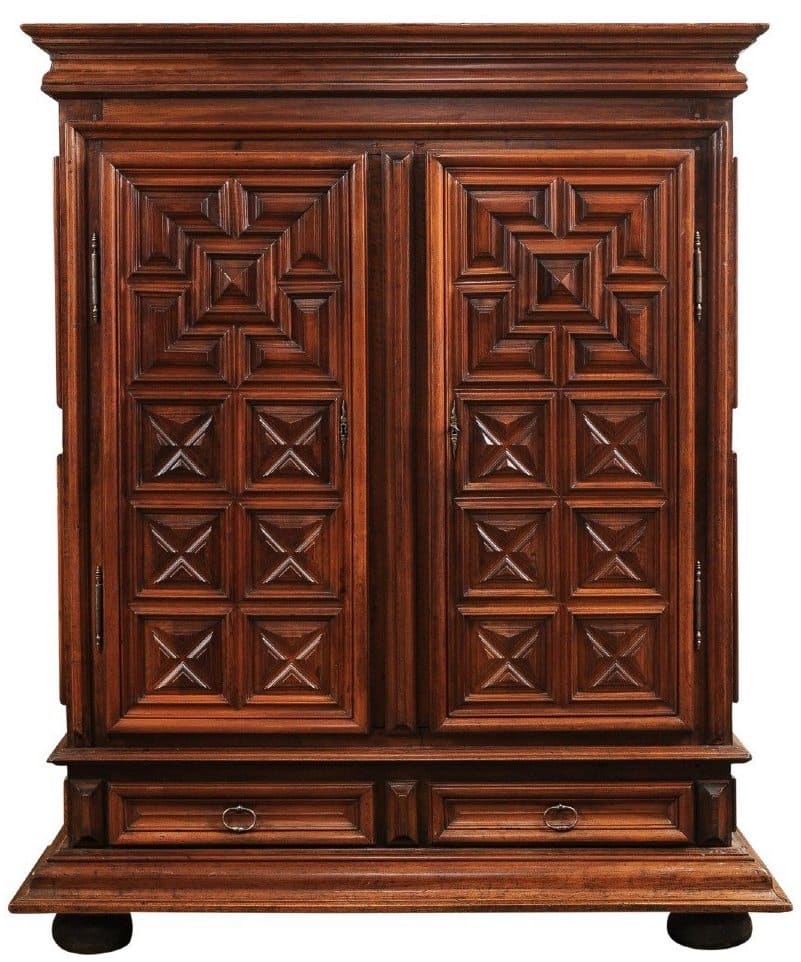
French Louis XIII walnut armoire with geometric motifs, early 17th century. © Jacqueline Adams Antiques
Walnut Wood in Furniture Making
Black walnut is used in a wide range of furniture styles, from traditional to contemporary. It is a popular choice for high-end furniture because of its unique color and grain patterns, as well as its strength and durability. One of the most common uses of walnut wood in furniture making is for tabletops and other flat surfaces. The dense, strong wood is ideal for these applications because it resists warping and cracking. Walnut wood is also frequently used for chair frames and legs, as it is strong enough to support weight and withstand pressure.

Walnut octagonal occasional table, 20th century. © Anthony Short Antiques
Walnut wood is also used in decorative pieces, such as inlays and veneers. The unique grain patterns and colors of walnut wood make it an ideal choice for creating intricate designs and patterns. Walnut veneers are often used to add elegance and artistic complexity to furniture pieces. Traditional styles of furniture, including Queen Anne and Chippendale styles, often feature dark walnut wood with intricate carvings and ornamentation. Contemporary furniture pieces, on the other hand, often feature lighter, simpler designs that highlight the natural beauty of the walnut wood.
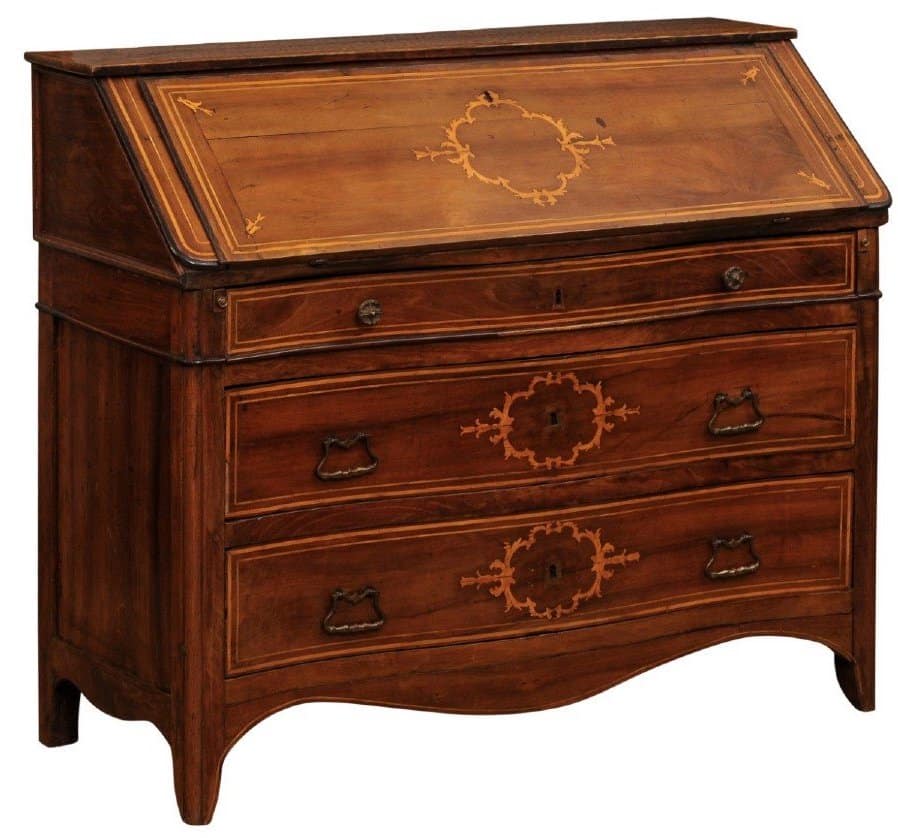
Italian walnut and maple slant front desk with floral marquetry, 1820s. © Jacqueline Adams Antiques
Visual Appeal of Walnut
There are many benefits to using black walnut wood in furniture making. One of the most significant benefits is the unique color and grain patterns of the wood. The wood has a dark, warm tone that can range from a light brown to a deep, chocolate brown, with occasional purple or reddish undertones. This coloration is often more pronounced in older growth trees, which have had more time to develop their rich coloring.
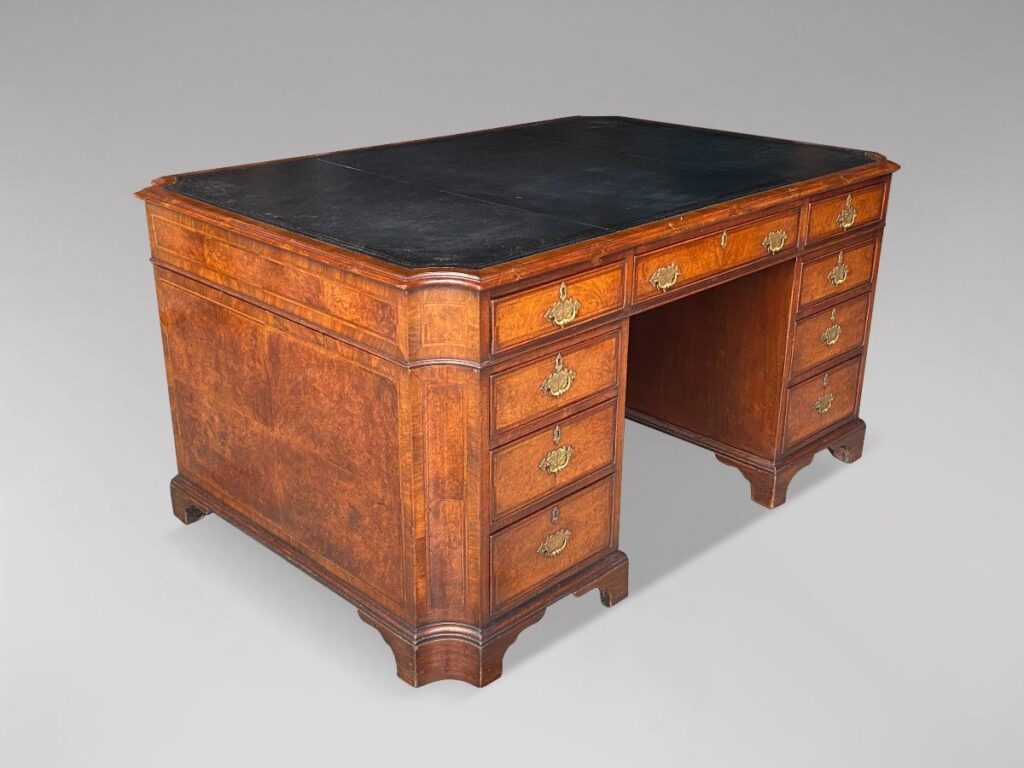
Georgian walnut and inlay partners desk, 19th century. © Anthony Short Antiques
The grain pattern of walnut wood is often irregular, with swirling patterns and occasional knots that add beauty and visual interest. The grain patterns can also create a range of visual textures, from fine and subtle to bold and dramatic, depending on how the wood is cut and finished. Furniture made with walnut wood is often considered a work of art, with the natural beauty of the intricate grain patterns serving as a focal point of the piece.
Black walnut wood also has a natural luster and depth that adds to its unique appearance. This is due to the wood’s natural oils, which give it a slightly glossy sheen that can enhance the depth and richness of the color and grain patterns. This natural luster also makes black walnut wood a popular choice for furniture makers who want to create pieces with a warm and inviting appearance. It can also be finished in a variety of ways to further enhance its unique properties, including the use of oils, stains, and varnishes to deepen the color and bring out the grain patterns. Alternatively, the wood can be left unfinished to showcase its natural beauty.

Italian Baroque walnut three drawer commode with carved panels, 17th century. © Jacqueline Adams Antiques
Durability of Walnut
The strength and durability of walnut wood are also significant benefits. Walnut wood is a hardwood, which means that it is denser and stronger than softer woods like pine or cedar. This strength makes it a great choice for furniture pieces that will be used frequently, such as chairs and tables. The wood is also resistant to scratches and dents, which makes it ideal for furniture that will be subject to heavy use, such as desks or dining tables. It is also resistant to moisture, making it an ideal choice for furniture that will be used in humid environments.

Walnut open bookcase, 19th century. © Anthony Short Antiques
One reason for the strength and durability of walnut wood is its natural resistance to decay and rot. This resistance comes from the wood’s natural oils, which help to repel water and prevent the growth of fungi and bacteria. As a result, walnut wood can even be used in outdoor furniture or in areas where moisture is a concern, such as bathrooms or kitchens. Walnut wood is also highly resistant to pests such as termites and beetles.
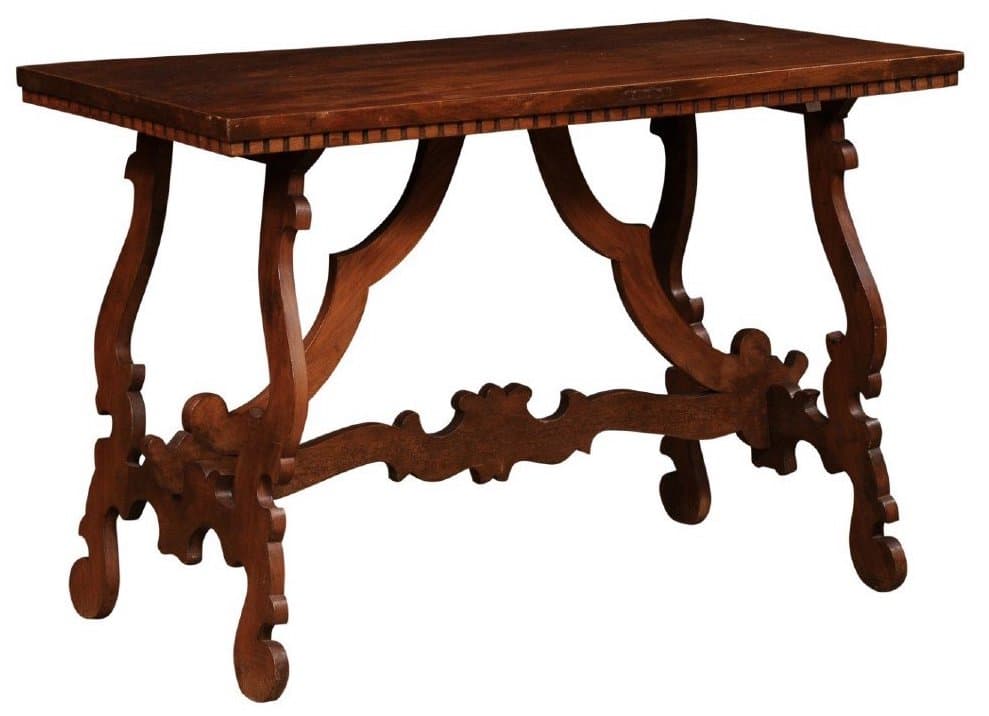
Italian Baroque walnut Fratino table with lyre shaped base, 20th century. © Jacqueline Adams Antiques
The strength and durability of walnut wood are also due to the way the wood is harvested and processed. When harvested correctly, walnut wood is dried slowly to prevent warping and cracking. This process ensures that the wood retains its natural strength and durability, which allows furniture makers to create intricate designs and ornamentation without compromising the structural integrity of the piece, as the wood is strong enough to support significant weight even when carved. These characteristics make walnut very versatile, an ideal choice for both decorative and functional pieces, allowing them to retain their beauty and utility for centuries.







